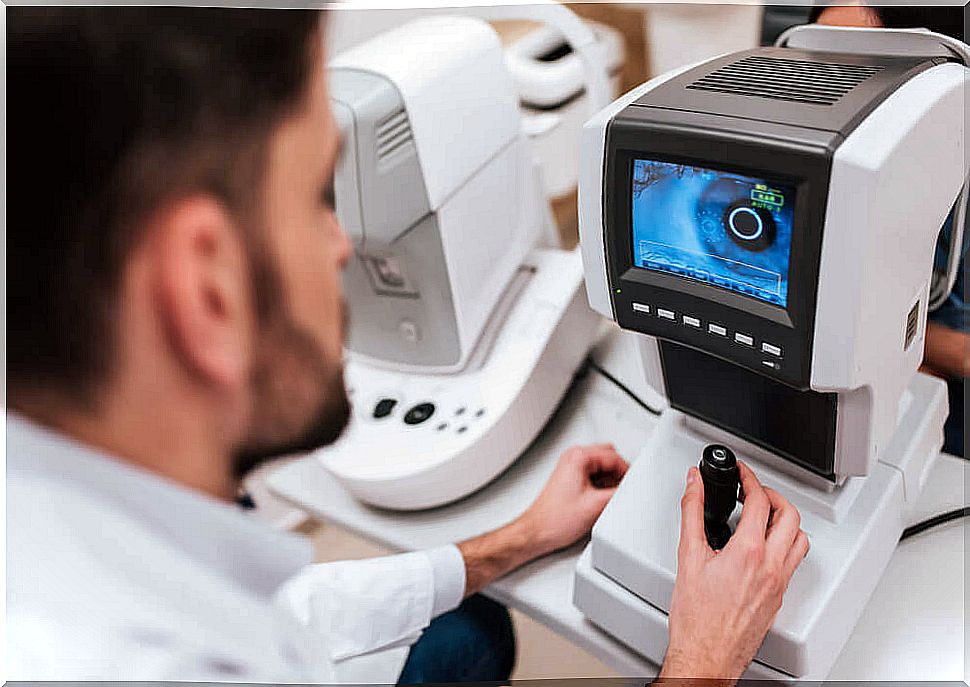Ocular Melanoma: Symptoms And Causes
Melanoma is a type of cancer that originates from cells called melanocytes, which are responsible for producing the pigment that gives color to the skin, eyes, and hair.
Now, how does this type of cancer develop? How can it be detected? What are its most characteristic symptoms? We will reveal this to you below, as well as other information of interest.
What is ocular melanoma?
Ocular melanoma, as its name implies, is a type of melanoma that affects the eye.
Now, the eye is made up of many parts, therefore, this form of melanoma will receive its name depending on the area of the eye that is affected.
When ocular melanoma affects the uvea, the layer of the eye responsible for transporting blood within this organ, it is called uveal melanoma. The latter makes up 85% of ocular melanoma cases in the world, affecting about 6 people per million inhabitants per year.
Causes of ocular melanoma
Today, the mechanisms that result in ocular melanoma are not completely clear. However, there are risk factors that are associated with the development of this disease. We can highlight the following:
- Skin color (98% of cases occur in fair-skinned people).
- Light color of the iris (linked to gene mutations that predispose to suffering from some type of melanoma).
- Presence of atypical moles on the skin.
Old age (over 70 years old) is also believed to play a role in the onset of this disease. On the other hand, some diseases are associated with the condition:
- Oculdermal melanocytosis.
- Neurofibromatosis type 1.
- Syndrome Li-Fraumeni.
- Melanoma in any other part of the body (risk of metastasis to the eyeball).

Symptoms and diagnosis
Establishing a standard regarding the symptoms presented in this pathology is difficult. The presentation of symptoms varies depending on the location of the eye injury. In fact, the most common is that affected people have no symptoms.
When they do present symptoms, they are usually related to the fact that it affects the retina and causes loss of vision, vision of lights or flashes and defects in the visual field.
Ocular melanoma is not associated with pain, unless it spreads to the structures that surround the eye, increasing the pressure within it or causing inflammation.
Since the symptoms are quite inaccurate, the diagnosis of ocular melanoma is usually incidental. This means that it is often discovered during routine eye exams or visits to the ophthalmologist on suspicion of an eye condition.
When ocular melanoma is suspected, the diagnosis is usually assisted with an ocular ultrasound, which manages to confirm the disease in 95% of cases.
Treatment of ocular melanoma
Previously, ocular melanoma was treated by enucleating the eye (removal) of the affected person. Today, this practice is in disuse thanks to advances in cancer treatments.
Radiation therapy and targeted chemotherapy have helped preserve the eyeball in 90% of cases. However, high radiation can cause damage or loss of vision by affecting the retina and the optic nerve.
Photodynamic therapy has the promise of solving these problems, but it is not yet universally accepted due to a lack of data to support it.

Involvement of other organs and survival
One of the biggest concerns for people affected by ocular melanoma after healing is the likelihood of the cancer developing elsewhere in the body.
According to a study presented in 2009, between 25% and 33% of patients with ocular melanoma were diagnosed with metastatic cancer in the next 10 years. The liver is the organ most affected by metastasis in these cases.
While some experts advocate routine testing every 4 to 6 months for early detection of metastases, others think this measure has no impact. There are studies that suggest that early detection of metastatic cancer is not associated with better patient survival.
Patients with ocular melanoma have a relatively good survival rate with a percentage between 70 and 80% 5 years after diagnosis.









